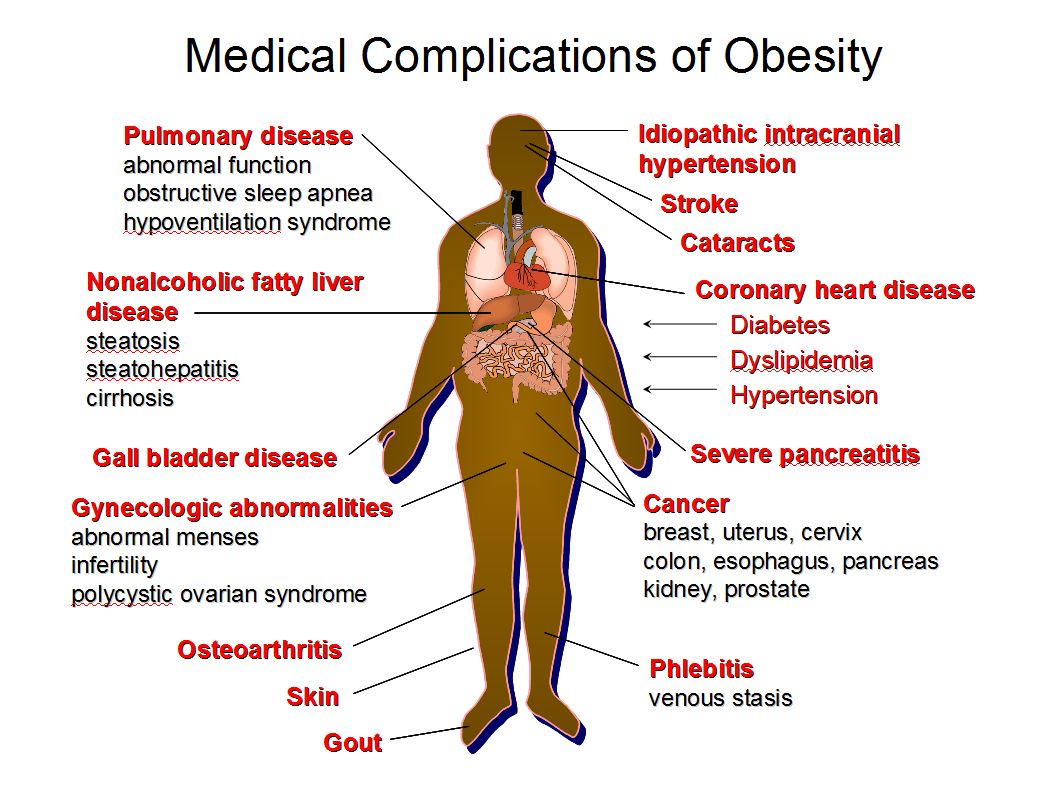Obesity is a disease that affects nearly one-third of the adult American population (approximately 60 million). The number of overweight and obese Americans has continued to increase since 1960, a trend that is not slowing down. Today, 64.5 percent of adult Americans (about 127 million) are categorized as being overweight or obese. Each year, obesity causes at least 300,000 excess deaths in the U.S., and healthcare costs of American adults with obesity amount to approximately $100 billion. (AOA)
Obesity is a complex, multi-factorial chronic disease involving:
Environmental (social and cultural) The tendency toward obesity is a result of our environment: lack of physical activity along with high-calorie, low-cost foods. Home, work, school, and even the community can inhibit a healthy lifestyle.
Genetic (Hereditary plays a large role in determining how susceptible people are to overweight and obesity). Genes also influence how the body burns calories for energy and stores fat.
Physiologic, metabolic, behavioral (eating too many calories while not getting enough exercise) and psychological components. It is the second leading cause of preventable death in the U.S. Behavioral changes brought on by economic development, modernization and urbanization have been linked to the rise in global obesity.
Environmental factors are the main factors to overweight and obesity but at the same time are they provide the greatest opportunities for prevention and treatment.
Calculating BMI
Body Mass Index (BMI) is a measurement tool used to determine excess body weight. Overweight is defined as a BMI of 25 or more, obesity is 30 or more, and severe obesity is 40 or more. You can visit www.nhlbi.nih.gov to estimate your BMI.
Obesity Related Health Conditions
The morbidity and mortality risk from being overweight is proportional to its degree. Individuals with morbid obesity, therefore, have the highest risk for developing numerous illnesses that often reduce mobility and quality of life due to their excess weight. In particular, type 2 diabetes, gallbladder disease and osteoarthritis have been found to increase concurrently with higher BMI. Premature death, a 20-year shorter life span, has also been found in individuals with morbid obesity. All of the systems that make the body function are affected by morbid obesity.
Type 2 diabetes
Gallbladder disease and gallstones
Liver disease
Osteoarthritis, a disease in which the joints deteriorate. This is possibly the result of excess weight on the joints.
Gout, another disease affecting the joints
Pulmonary (breathing) problems, including sleep apnea in which a person can stop breathing for a short time during sleep
Reproductive problems in women, including menstrual irregularities and infertility
Gastroesophageal reflux/heartburn
Hypertension
Heart Disease
Depression
Psychological disorders/social impairments
Urinary Stress Incontinence
Obesity is also linked to higher rates of certain types of cancer. Obese men are more likely than non-obese men to die from cancer of the colon, rectum, or prostate. Obese women are more likely than non-obese women to die from cancer of the gallbladder, breast, uterus, cervix, or ovaries
